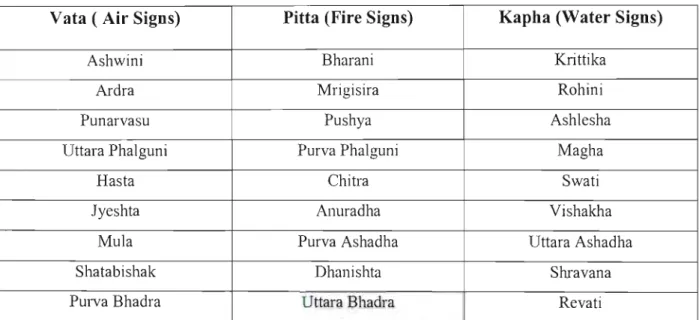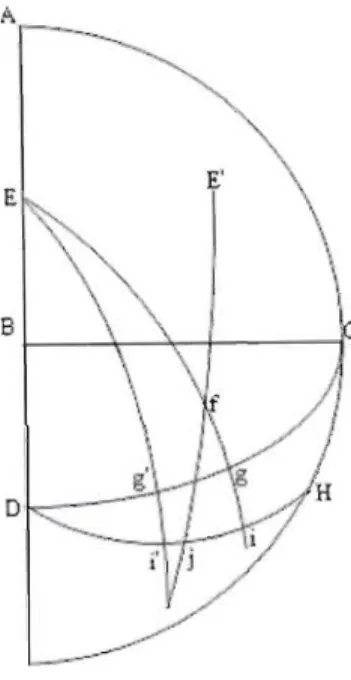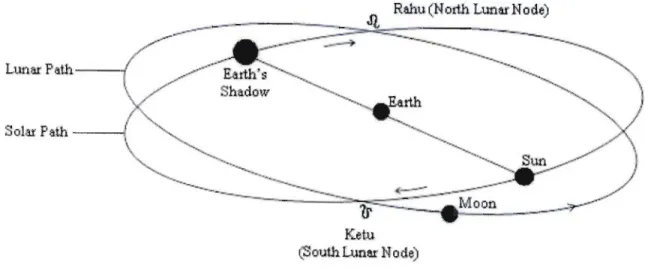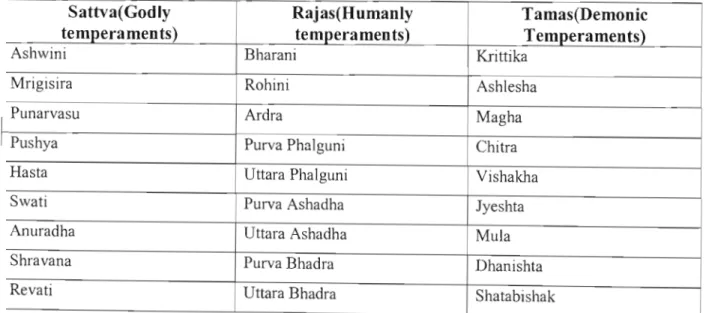Sarton says that astronomy began in Greece with the observation of the stars and the movements of the planets. At the time of the crescent moon, the distance from the moon to the sun is equal to 87 degrees;.
The Concepts in Ptolemy's Tetrabiblos
This idea is based on the doctrine of the four elements, which permeate the structure of nature. They can be described as alive; they have true meaning, in that they have motion, or inanimate; they are imagined and remain lifeless and may have evolved from the dust of the earth to the planets in the sky.
The Horoscope of Nations
He does this to determine the effect of the zodiac on a specific people. However, it is not just the zodiac position that determines the outcome of a nation.
Astrology and Medicine
While Ptolemy attributes injury to the presence of malefic planets, he also attributes a period of healing to benefic planets (Tetra 3.12.331). If Jupiter is present, it causes the injuries to be masked by wealth or honors, which may lead to the mitigation of the disease. Ptolemy gives us rather lengthy treatises on the symptoms produced by the planets, following his doctrines of natural law.
However, he also provides a logical explanation in his Almagest in which he discusses the concept of the four humors (Whitfield. The principle doctrine was that the planets changed the balance of the humors in the body and that each zodiac sign ruled a certain part of the body.
Horoscopic Astrology and the affects on Individual Human Difference
In the Almagest, Ptolemy provides us with a detailed account of the topoi, or the houses of the. These places were governed by the various zodiac signs, which also overlapped in the area of the astrology of nations. He uses a three-part system, which he outlined in Book 2 of the Tetrabiblos.
Those in the east are more masculine as they have strength and resilience as a result of exposure to the sun. Physiognomies detailed prophetic traits in relation to the constitutional elements of the human body.
Ptolemy's Seven Ages of Man
This implies that people at that time were more interested in immediate answers than in the characteristics of the individual himself. Mars ushers in the next era of man and introduces a violent nature of man, striving for power and fame. This leads to the eventual movement towards a more mature judgment of foresight and philosophical detachment.
The Tetrabiblos in modern translation tends to exclude the seven ages of man, implying that it is not necessarily important or true for that matter. They do not coincide with the periods of the planets' rotations around the Sun, and there seems to be no metaphysical justification for them.
Fate and Destiny in the Tetrabiblos
However, the main question is whether everything or every event that happened was predetermined by a hidden chain of causes from which man could not escape. Ptolemy does not give a direct answer to these questions, but merely asserts that natural phenomena are partly responsible. He also says that much of this matter of luck depends not so much on circumstances or occasions, but on the temperament of the individual.
The Tetrabiblos draws reasonable conclusions from identifiable sources, but this does not mean that all its beliefs or explanations are established and agreed upon, but it does show that astrology was recognized as being of some importance in that it did reflect the thoughts of the intellects that give rise to much debate.
In Defenc e of the Tetrabiblos against the Critics
Why should he also not be able to perceive the general quality of an individual's surroundings from the state of the heavens from the time of his birth. This is due to the scale of the undertaking as well as the approximate relationship between the ancient configurations of the planets which formed the basis of the ancient records and the present state of the heavens. It is his view that the state of heaven is the most powerful in birth, as a result of several contributing factors such as genetics - a horse begets a horse, a man begets humans and so on.
The worship of the sun and moon was logical because of the 'Karmic Doctrine' of rebirth and the concept of the Gunas. The argument is that although the Indian civilization is considered one of the oldest civilizations in the world, its recorded history remains minimal.
The Age of the Vedas
Although it can be assumed that the Indians did not fully understand the scientific reasoning behind astrology, it has been mentioned in the Rig Veda, dated around 2000 BCE, although chronological accuracy is notoriously difficult to establish in Indian religion. The system of astrology known to the ancient Indians was Jyotish which was found in the Vedas. The people of India drew their conclusions from the theory of 'seeing is believing'. The Rig Veda provides a number of commentaries on the various aspects of nature.
The Rig Veda states that the year is represented by the changing seasons. Brihaspati was referred to as the regent of the Nakshatra, equivalent to Delta Cancra.
The Concept of Time
To change this discrepancy, Vedanga Jyotisa added two months in a period of five years containing 62 lunar months or 1830 days. The latter is called after its gross or minute by two names, murta and amurta.' This literally means that as with all civilizations there is a cycle of birth and death, but the Indians related it more to Death and again bring in a sense of myth and religion when they relate this back to Yam a or the God of Death.
The Yuga System (The Ages of Man)
The Surya Siddhanta expresses the same idea, but Burgess attempts to analyze the text more carefully in his translation. However, Burgess states that the difference between one age and another is indicated, but is difficult to estimate in logical terms, because in the Surya Siddhanta it is calculated in divine years. These eras are compared to the Greek equivalents of the Golden Age (la-ta Yuga), the Silver Age (treta Yuga), the Bronze Age (Dvpara Yuga) and the Iron Age (Kali Yuga).
As seen in Figure 1, the first age is the longest age and is defined in the Surya Siddhanta as the age of the 'winners', the next two ages are shorter, but not much mention is made of them in the text. The last age (current age) is the shortest and is termed as 'unlucky age'.
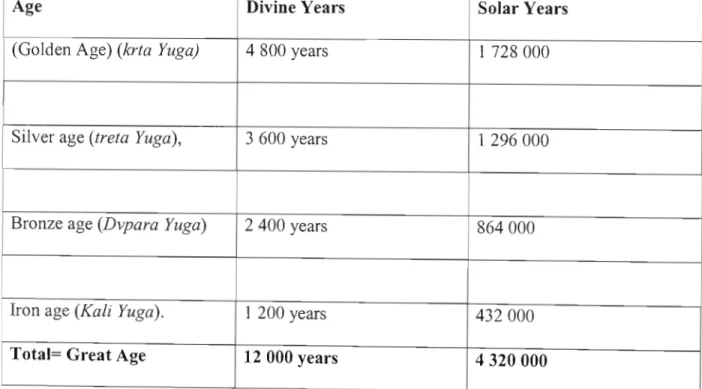
The Twenty Seven Fold Zodiac of the Vedas
Names of the Asterisms and their Characteristics
4.Rohini The Arab, meaning red or dark Prajapati, Lord of all Taurus Aldabaran orange, represented by a created being. The reason for this as stated by Burgess viii, 9) is that the table was probably drawn up at the time of the vernal equinox and the period which actually coincided with the starting point of the Hindu sidereal sphere - it has the beginning of the sign of Ashwini, the point 10 degrees eastward on the ecliptic. This later changed to just over 13 degrees with the omission of the twenty-second asterism of Abhijit.
However, this did not mean that the sign or rather the constellation disappeared completely, it was incorporated into the constellation of Purva Ashadha. In modern Vedic astrology, the sign Ardra also falls under the western sign Gemini.
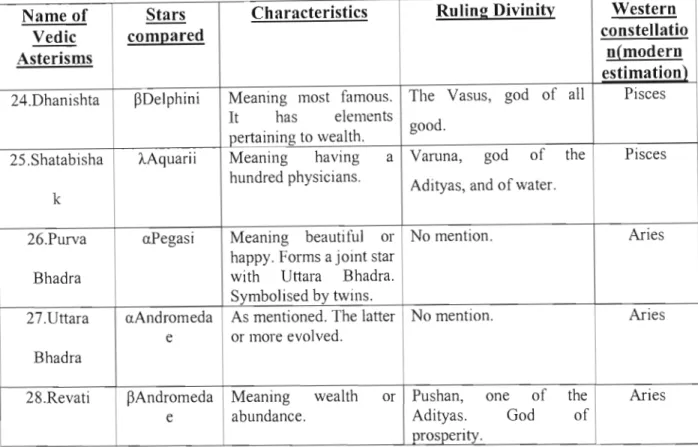
Fate, Destiny and Human Difference in the Vedas
The doctrine of Karma and reincarnation play an important role in the concepts of Fate and Destiny in the Rig Veda. Rahu and Ketu are chaya grahas (shadow planets) and form an important part in the destiny and fortune of the individual. Since they are points of ecliptic activity, they block light from the Sun and Moon creating shadows.
Although these concepts of fate and destiny are marked by these karmic ties, it does not mean that an individual cannot improve his current situation. This doctrine implies that while some aspects of one's destiny and eventual destiny cannot be changed according to the Rnanu Bandhanas, other areas can be improved.
Eclipses in the Surya Siddhanta
The Importance of the Diameters of the Sun and Moon
Surya Siddhanta states that Rahu and Ketu are firstly the north and south nodes of the moon. However, these calculations are important for accurately determining ecliptic activity and the approximate size of the cast shadow. Once this is established by basic calculations of the mean diameters of the Sun and Moon, the interval between midnight and the moment of opposition and conjunction must be determined.
The calculations for finding the diameters of the sun and moon are important because they relate to the results and speed of the eclipse caused by a solar eclipse. Therefore, the theory that the stars control our fate is common in Vedic astrology.

The Gunas of Ancient India
There are three elements in the doshas which are similar to the western elements earth, air and fire. The direct evidence of the influence of the Greeks on the Hindus is in the form of calculation in astronomy. The lunar division of the zodiac can be attributed to the Hindus, according to Burgess.
The Solar division of the zodiac into twelve signs can be attributed to the Europeans and not specifically Greeks. But Burgess is of opinion that the names of the twelve-fold zodiac may have existed in India before the Greeks. There is no author of the Surya Siddhanta, but it is considered to have been written by divine revelation from the Sun God, i.e.
Shadow Planets: The Shadow Planets refer to the north and south of the moon.
